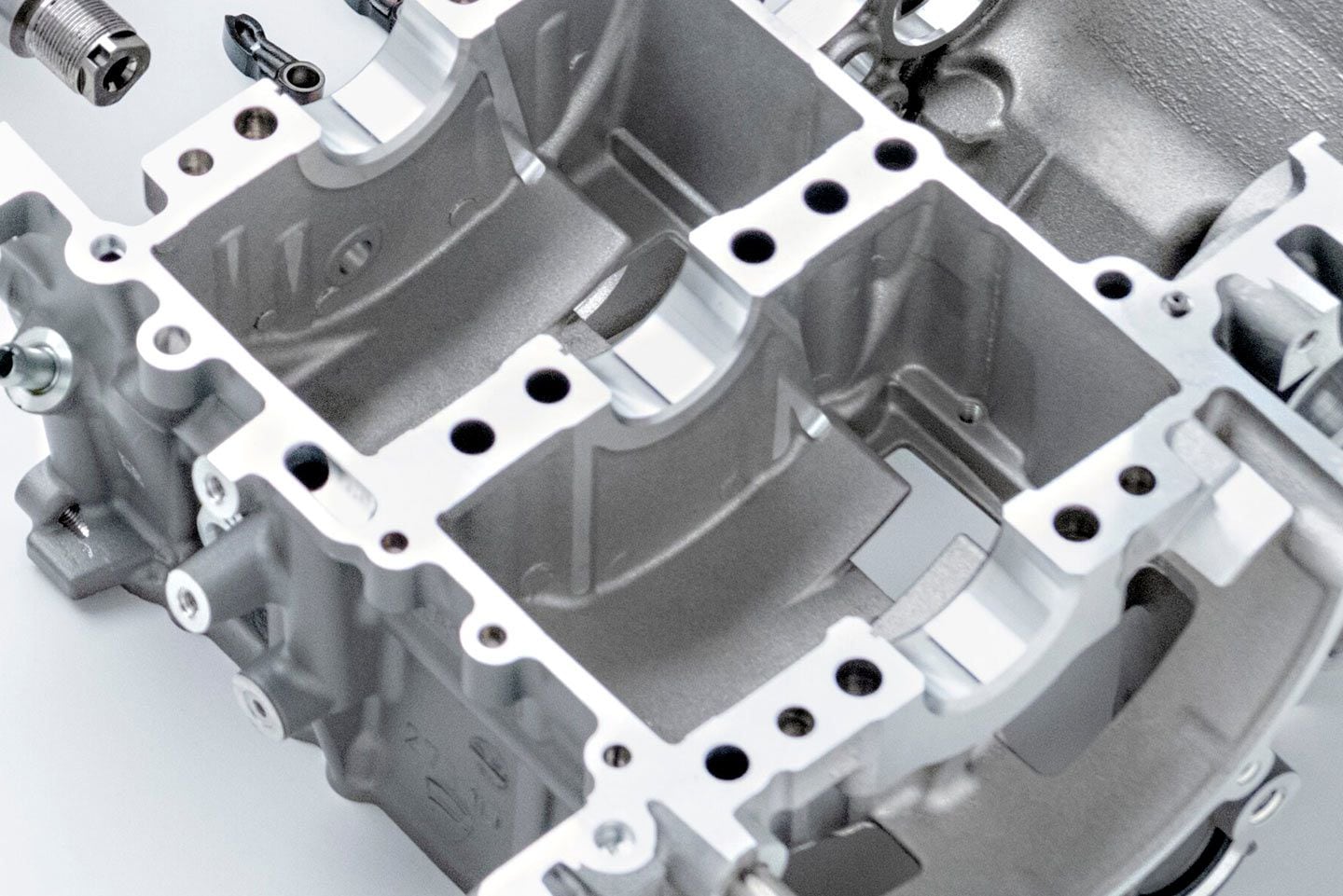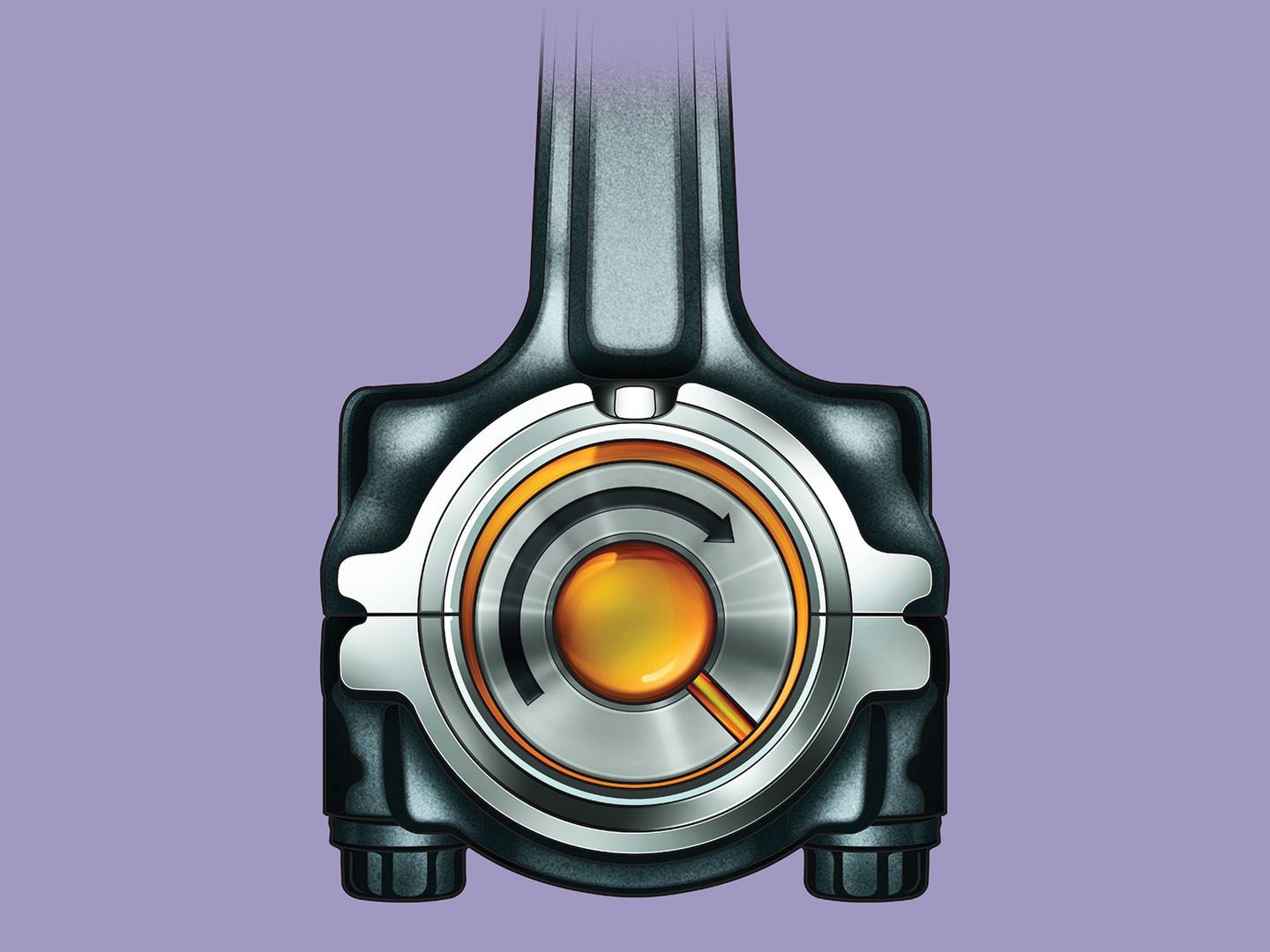
 |
|
|
#1 |
|
All the news that's fit to excerpt
Name: newsie
Location: who knows?
Join Date: Jun 2008 Motorcycle(s): only digital replicas Posts: Too much.
|
[cycleworld.com] - Journal Bearing in Motorcycle Engines
Friction is essential to making a motorcycle work, but there are places engineers work hard to minimize that friction.
Click here to view on their site.  Kevin Cameron has been writing about motorcycles for nearly 50 years, first for Cycle magazine and, since 1992, for Cycle World. (Robert Martin/)We can’t walk or keep fasteners tight without friction, but friction between moving parts in internal combustion engines takes from 15 to 25 percent of their gross (indicated) power, converting it into heat. Friction is handy to have approaching turn 1 at Daytona—friction between tires and pavement, and between brake pads and discs. Are we starting off on an idyllic weekend trip to the Cape? Controlled friction in the clutch begins the journey smoothly. Yet 15–25 percent of gross (indicated) engine power is consumed by friction (friction rises with rpm), and we pay for the fuel consumed by this loss.  Friction inside the engine can sap as much as 25 percent of gross engine power. (Ducati/)At idle there is little load on crankshaft journal bearings, so they are close to being centered in their bearing shells. A typical diametral bearing clearance in motorcycle engines is 0.0012 to 0.002 inch. Oil molecules colliding with the surfaces of the moving journals are swept around with them, but those close to the stationary bearing shells lose energy in colliding with them, and so move quite slowly. Between these extremes the oil film is sheared. Because speed is low and clearance is large, little energy is consumed. To our eyes, bearing journals look brilliantly shiny and smooth. How can their motion “pump” anything? At molecular scale they are as rough as if covered with jacks (used in the familiar child’s game). As the hydrocarbon chain molecules of oil collide randomly with such a surface they tend to be carried along with it. Their motion is transmitted to oil molecules farther away by the oil’s viscosity (its resistance to being sheared). These two effects allow journal rotation to sweep oil into the bearing’s loaded zone. This is the source of the self-pumping action of oil-lubricated plain journal bearings. When the engine is operating at high power and rpm, the applied load pushes the journal off-center in the bearing, with the minimum clearance between journal and bearing becoming as small as 1.5 microns (0.00006 inch). The pressure generated in this loaded zone by journal rotation can easily reach several thousand pounds per square inch.  The viscosity of the oil—its internal friction—causes it to be dragged by the rotation of the bearing into the very thin film in the loaded zone. (Jim Hatch/)This high-pressure pumping naturally consumes power; this is bearing friction, even though the oil film between journal and bearing shells is complete—there is zero metal-to-metal contact. Crankshaft bearing friction is less than 10 percent of total engine friction, but engine manufacturers work hard to reduce it. The friction is small because the quantities of oil being pumped in this way have very little volume. Easily performed experiments demonstrate that a monomolecular layer of oil floating on water is about 17 nanometers thick (a nanometer is 1/1,000th of a micron, which is one-millionth of a meter). That means that the engine oil in a lightly loaded bearing is the thickness of 1,200 monomolecular layers, making it relatively easy for oil molecules to glide past each other as the journal rotates. But at heavy load, with the journal pushed much closer to the bearing surface, the minimum thickness of the film leaves room for fewer than 100 such layers. This confines the bearing’s shearing action on the oil to a much smaller volume and at much higher pressure, increasing the intensity of molecular collisions. Engineers know that journal bearing friction increases as the cube of diameter. This motivates them to make journals as small as possible, sometimes even to the point of playing footsie with crankshaft fatigue failure. The longer a given oil’s hydrocarbon chains are (20 to 70 carbon atoms is typical), the higher its viscosity. The longer the carbon chain, the greater the number of other oil molecules it is touching. To move any one molecule in any direction therefore transmits force to many other molecules, increasing the resistance to such motion. During the 1990s engine manufacturers reduced the viscosities of engine oils as a means of slightly reducing engine friction and fuel consumption. But the lower the oil viscosity, the closer the journal comes to the bearing surface at its minimum point—possibly close enough to make contact between surface irregularities (those who study friction, tribologists, call them “asperities”) on journal and bearing surfaces. Preventing such contact required reducing the asperity height. This in turn required not only a smoother finish but also more accurately cylindrical journals. This is a lot of words to describe something that nature does so easily.
__________________________________________________
I'm a bot. I don't need no stinkin' signature... |
|
|

|
 |
 Similar Threads
Similar Threads
|
||||
| Thread | Thread Starter | Forum | Replies | Last Post |
| [cycleworld.com] - Shapes on Motorcycle Engines Used To Tell a Story | Ninjette Newsbot | Motorcycling News | 0 | July 7th, 2023 03:40 PM |
| [cycleworld.com] - Exploring the Lost Language of How Engines Used to Fail | Ninjette Newsbot | Motorcycling News | 0 | June 16th, 2022 02:00 PM |
| [cycleworld.com] - Answering Readers: Five-Valve Engines and Chatter | Ninjette Newsbot | Motorcycling News | 0 | April 22nd, 2022 03:44 AM |
| Help: Journal bearing replacement | cuong-nutz | 2008 - 2012 Ninja 250R Tech Talk | 2 | February 27th, 2014 09:39 PM |
| blown crank journal bearing | alex.s | 2008 - 2012 Ninja 250R Tech Talk | 28 | January 30th, 2013 09:38 AM |
|
|